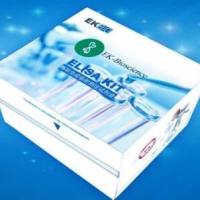Opiates, such as morphine and heroin, exert their pharmacological effects by binding to highly specific receptor proteins on the cell surface of neuronal and nonneuronal cells. In 1973, researchers in three different laboratories demonstrated the presence of receptors specific for opiates in preparations from brain and intestine (Pert and Snyder, 1973 ; Simon et al., 1973 ; Terenius, 1973 ). These studies satisfied the criteria first enunciated by Goldstein et al. (1971) for a narcotic receptor that is specific for the pharmacologically active D(−) enan-tiomer of the narcotics. The existence of specific opiate receptors in brain led many scientists to look for endogenous lig-ands in the brain for which opiate receptors exist. In 1975, Hughes et al. isolated and characterized two pentapeptides (Met- and Leu-enkephalins) from bovine brain that were able to mimic the actions of morphine in the pharmacological test systems. Now, it is known that a family of more than 20 endogenous opioid receptor ligands are generated from three precursor proteins, namely, proopiomelanocortin, proen-kephalin, and prodynorphin (Evans et al., 1988 ). Based on the pharmacological potency and the selectivity of receptors for various opioid ligands, the receptors were classified into μ, δ, and κ receptors (Pasternak, 1986 ; Zukin et al., 1988 ).






